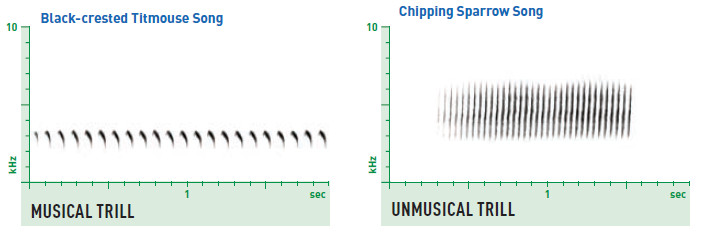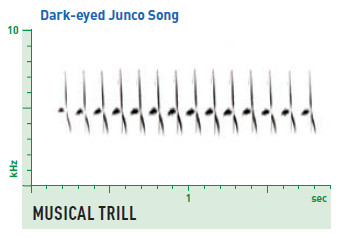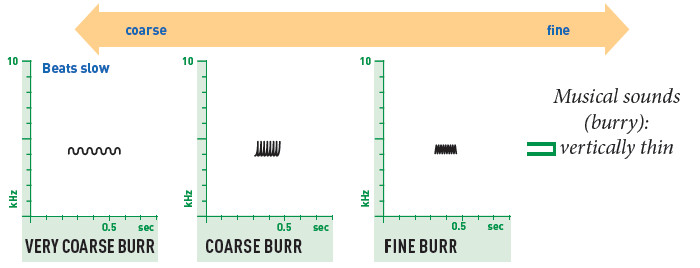The quality of a trill depends on the individual note
(Peterson Field Guide to Bird Sounds, interactive version of pp. 18-19)
The principles explained on the previous page apply to trills as well as individual notes. A trill of musical notes sounds musical, while a trill of unmusical notes sounds unmusical.
Chipping Sparrow Song:
Musical trumps unmusical
Our perception of a sound’s musicality tends to be determined by its most musical elements. For example, when a whistle on a spectrogram has both steep and flat sections, we tend to hear the flat, musical sections more strongly. This applies to trills as well.
This junco’s song consists of two alternated notes—one musical, one unmusical—repeated so fast that we hear only a single trill. Because musical sounds tend to dominate, the trill sounds rather musical to the ear.
Burry and buzzy sounds
These sounds rise and fall very rapidly in pitch, creating up-and-down squiggles, or beats, on the spectrogram. Burrs are more musical, and tend to take up less vertical space on the spectrogram; buzzes are less musical, and tend to take up more vertical space. In coarse burrs and buzzes, the squiggles are farther apart; in fine burrs and buzzes, they are closer together.
Tremolos are burrs so coarse that the individual beats are countable, or nearly countable. Peents are buzzes so fine that they take on a nasal quality.

Common Loon (tremolo):
Least Sandpiper (coarse burr):
Canyon Wren (fine burr):
Northern Rough-winged Swallow (coarse buzz):
Eastern Meadowlark (fine buzz):
American Woodcock (peent):




